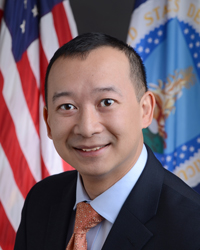 The U.S. Department of Agriculture (USDA) has announced that $8.4 million in competitive grants are now available to support the work of partner organizations that provide training, outreach and technical assistance for socially disadvantaged, Tribal and Veteran farmers and ranchers.
The U.S. Department of Agriculture (USDA) has announced that $8.4 million in competitive grants are now available to support the work of partner organizations that provide training, outreach and technical assistance for socially disadvantaged, Tribal and Veteran farmers and ranchers.
The financial support is offered through USDA’s Outreach and Assistance for Socially Disadvantaged and Veteran Farmers and Ranchers Program, also known as the 2501 Program, which is administered by the Office of Advocacy and Outreach (OAO).
“Diverse experiences, background and education are vital to a healthy agricultural sector that continues to meet the challenges of a changing world and the demands of markets at home and abroad,” said Acting Deputy Agriculture Secretary Michael Scuse. “The 2501 Program is an important part of how USDA partners with land-grant universities, Tribal colleges, Tribes, nonprofits and other community-based organizations to grow the next generation of agricultural innovators and entrepreneurs that keep American agriculture the most productive anywhere.”
More than $74 million has been invested through the 2501 Program since 2010, leveraging the work of more than 300 local partners. The 2014 Farm Bill reauthorized the program, and expanded its assistance to include military veterans.
Qualified partner organizations provide a diverse range of services and technical assistance based on local needs. Last fall, 2501 funding was used to create the Socially Disadvantaged Farmers and Ranchers Policy Research Center at Alcorn State University, which will provide a national hub for analysis and development of policy recommendations to improve engagement and promote the interests of socially disadvantaged farmers and ranchers.
Proposals for these grants must be received by July 29, 2016 and must be submitted online here. Details are available in the June 27, 2016 Federal Register Notice, and may also be obtained by contacting USDA by mail at Office of Advocacy and Outreach, Attn: Kenya Nicholas, Program Director, Whitten Building, Room 520-A, Mail Stop 0601, 1400 Independence Avenue SW., Washington, DC 20250.







